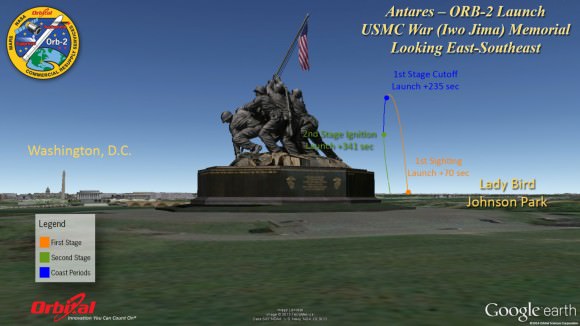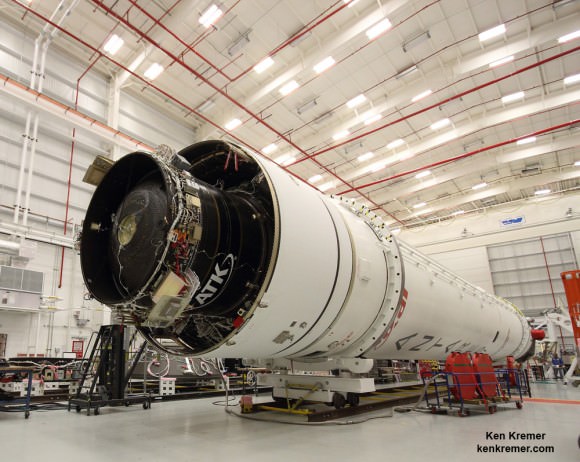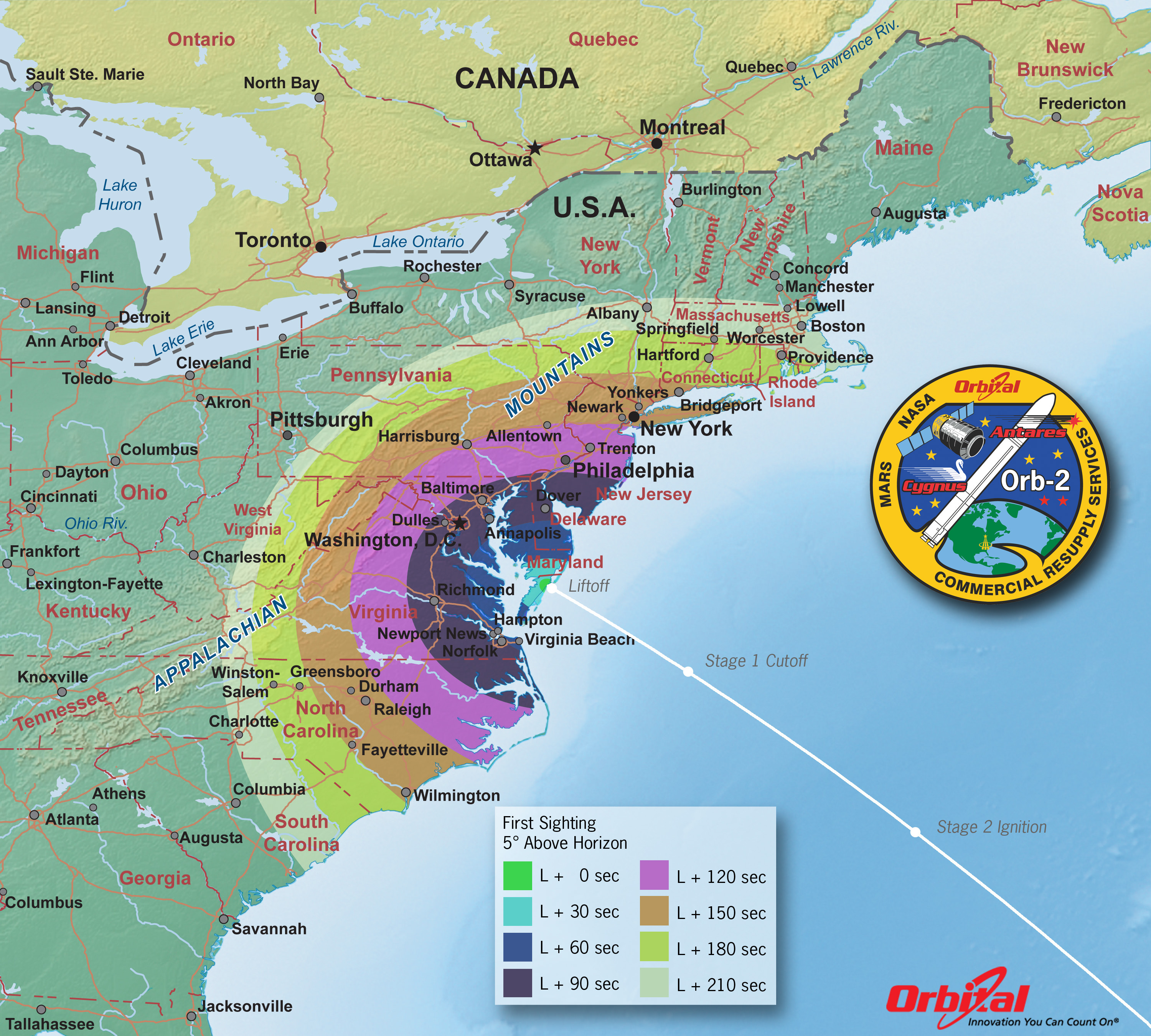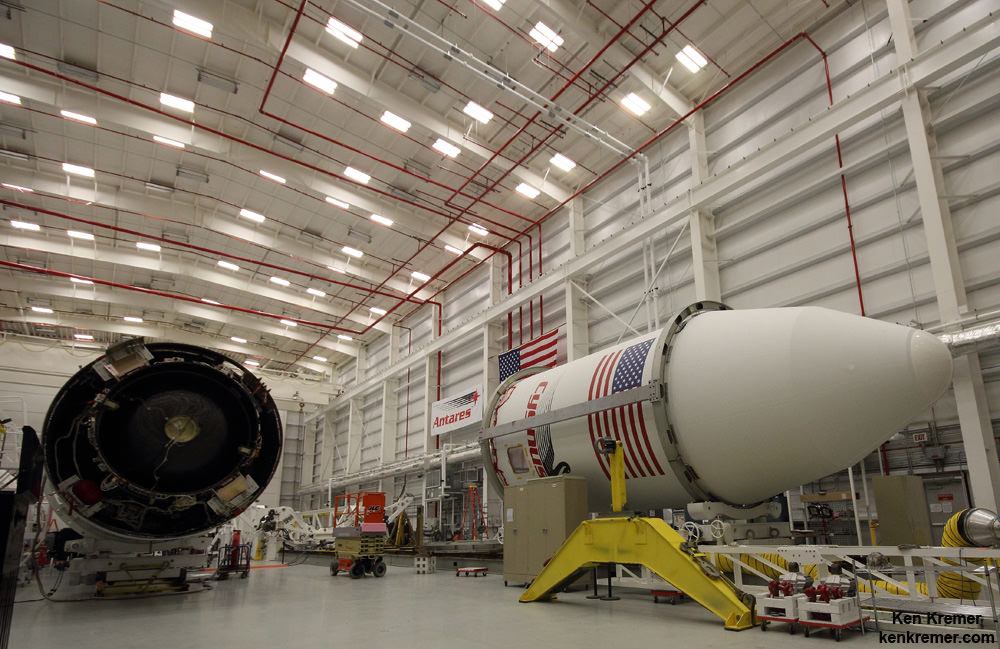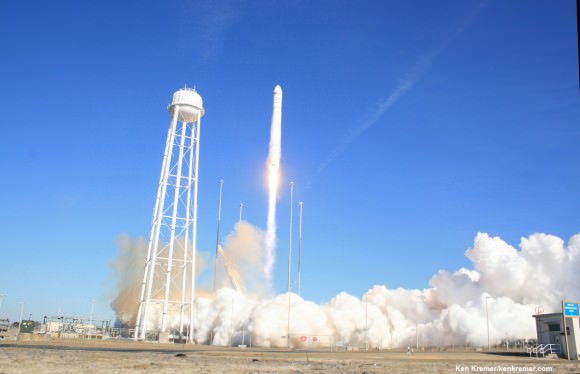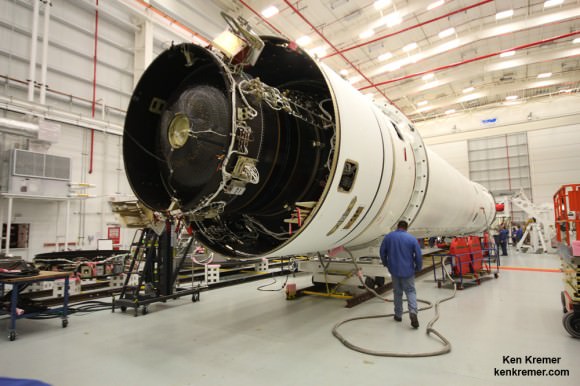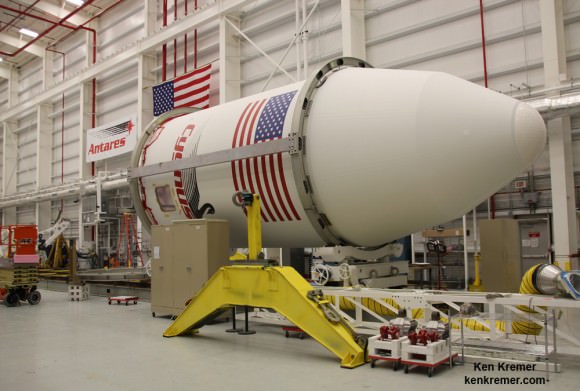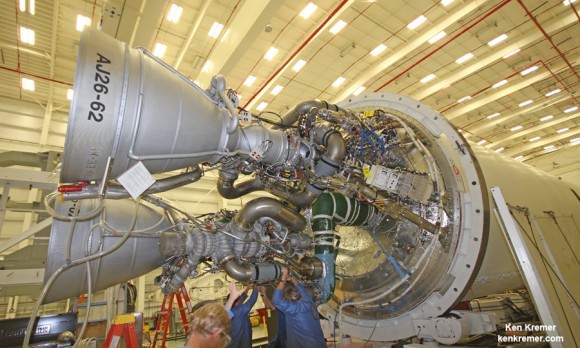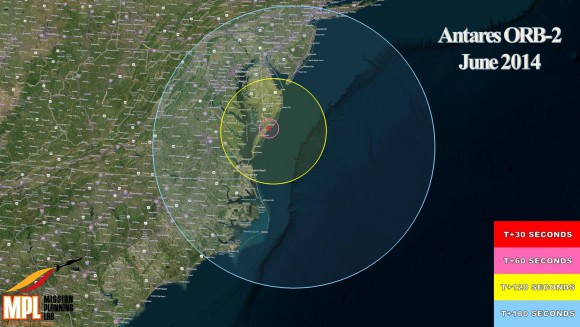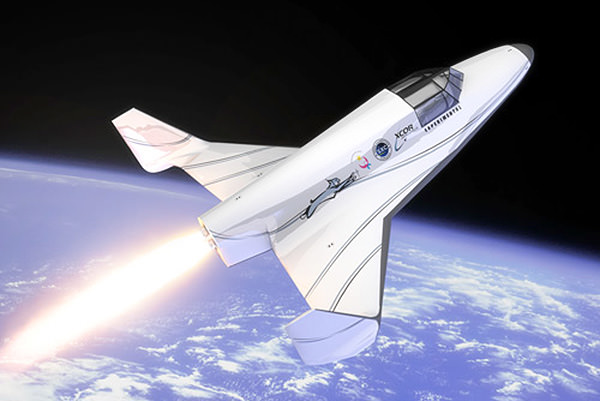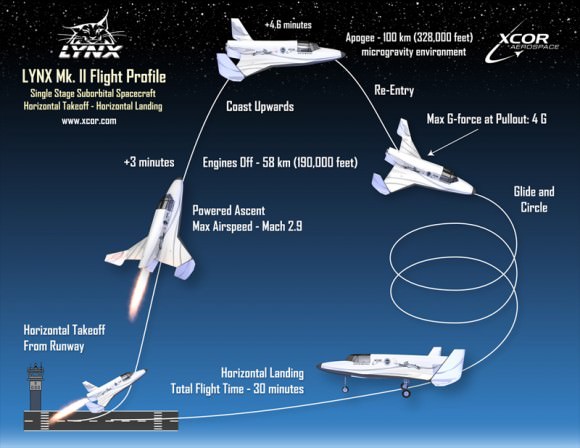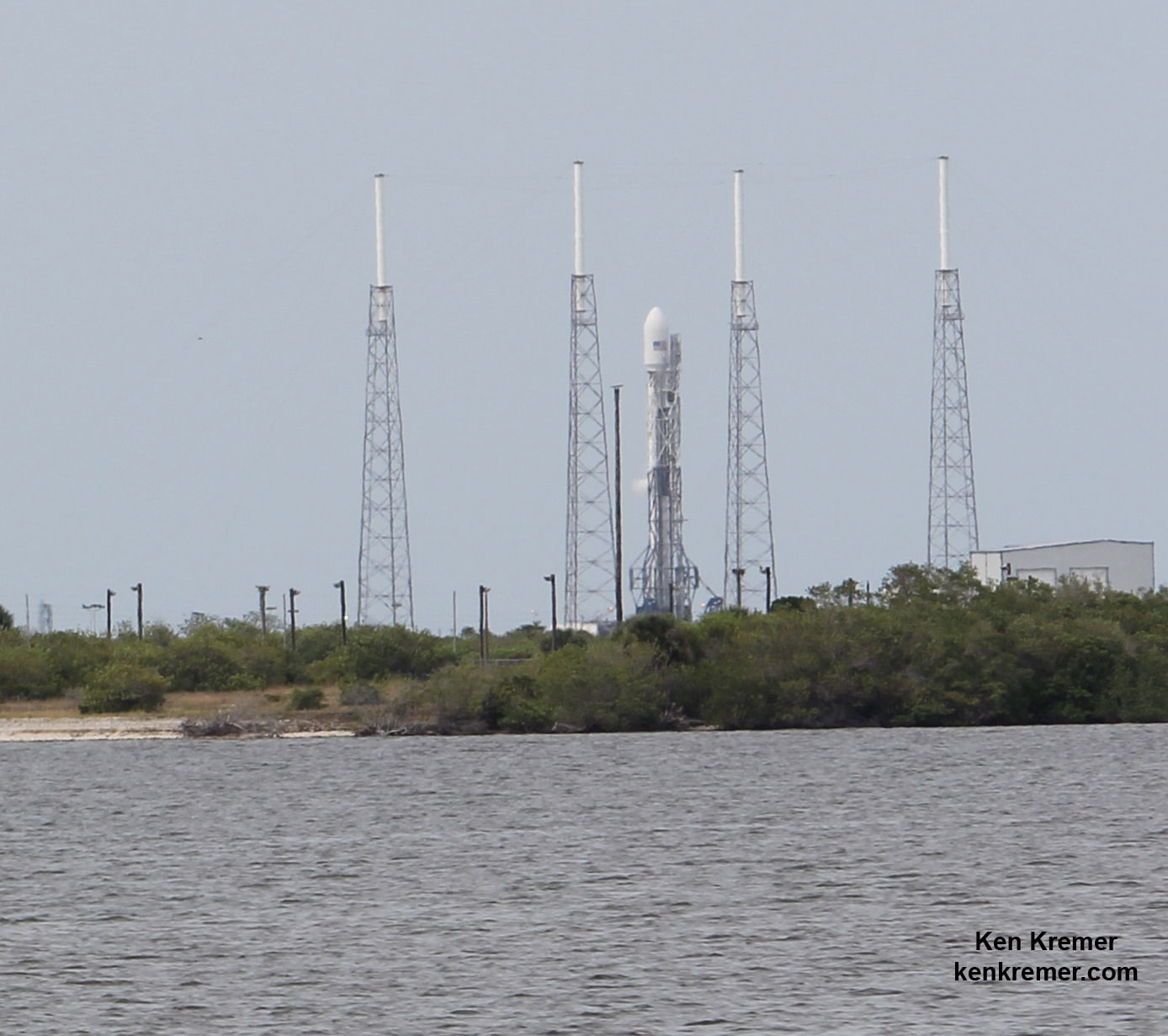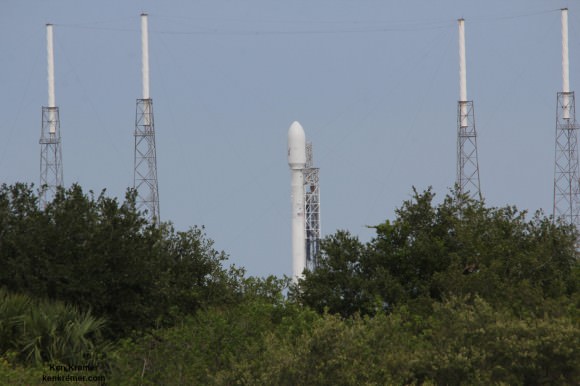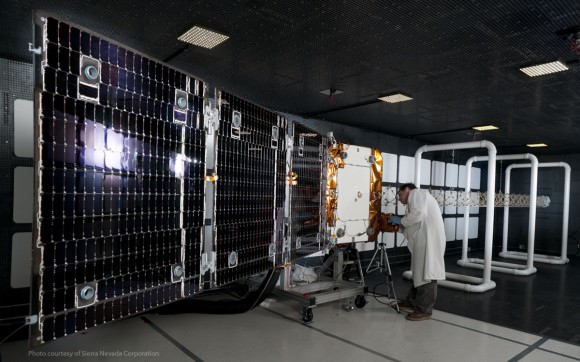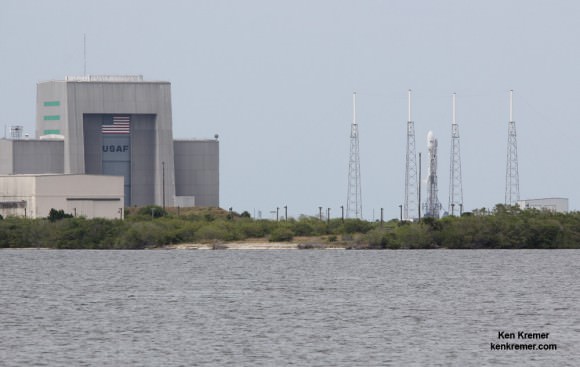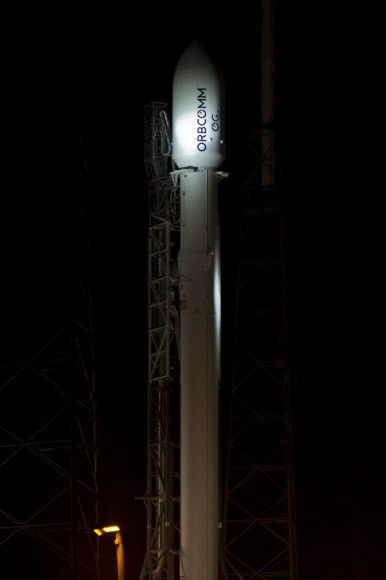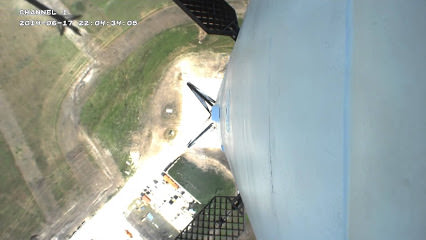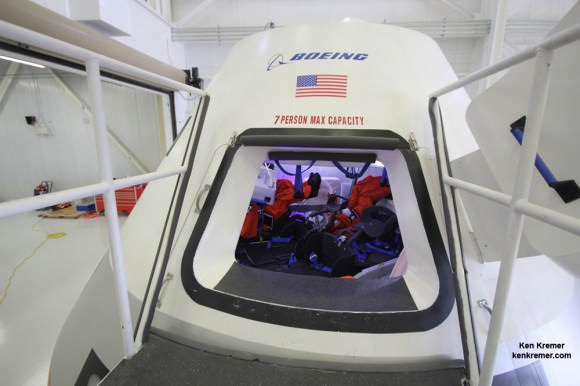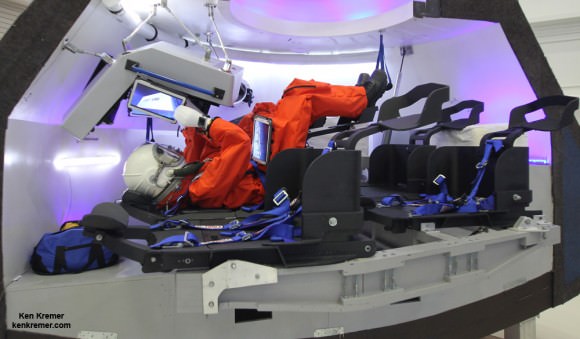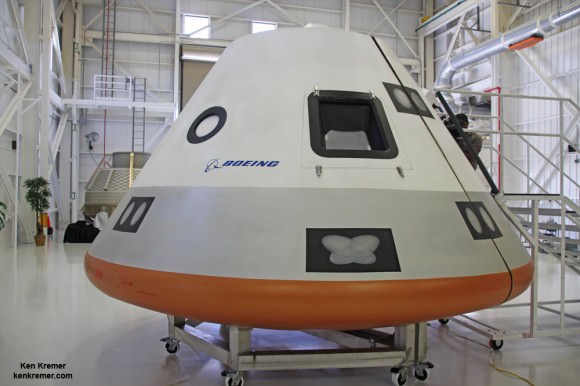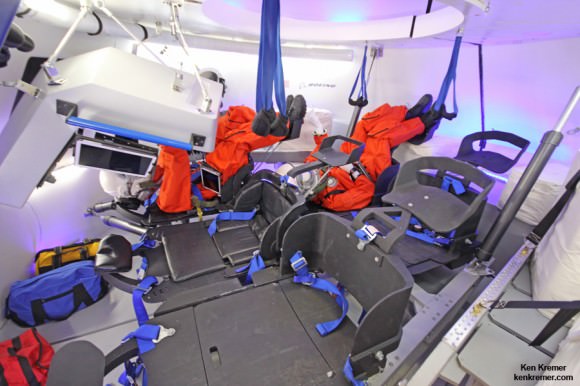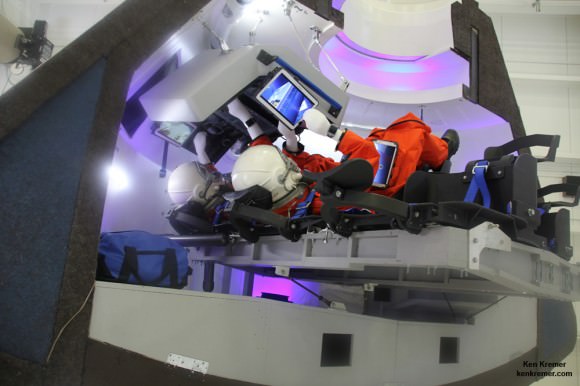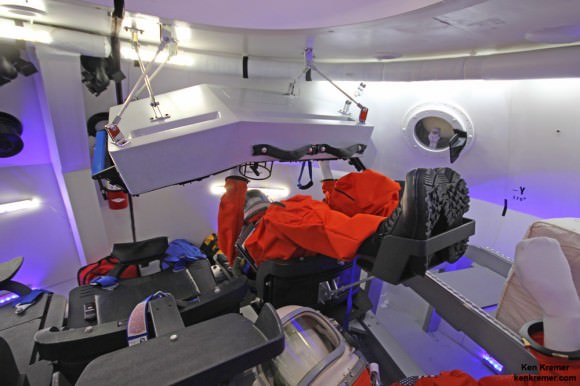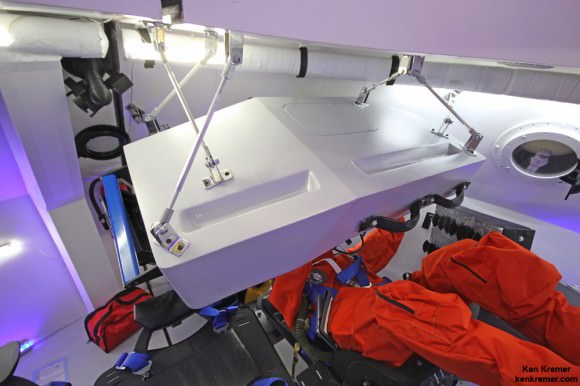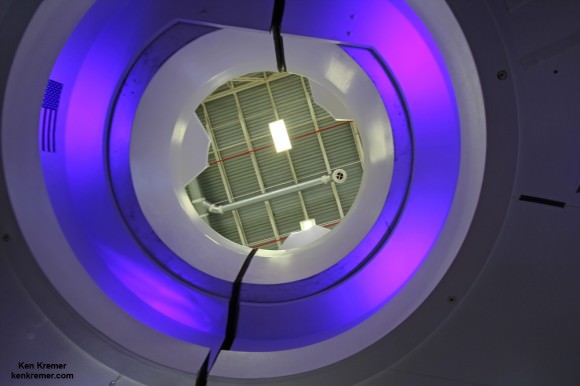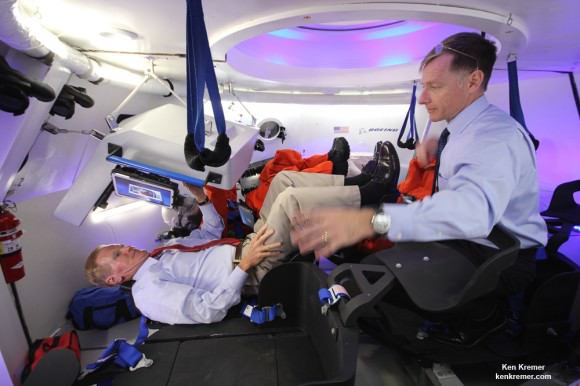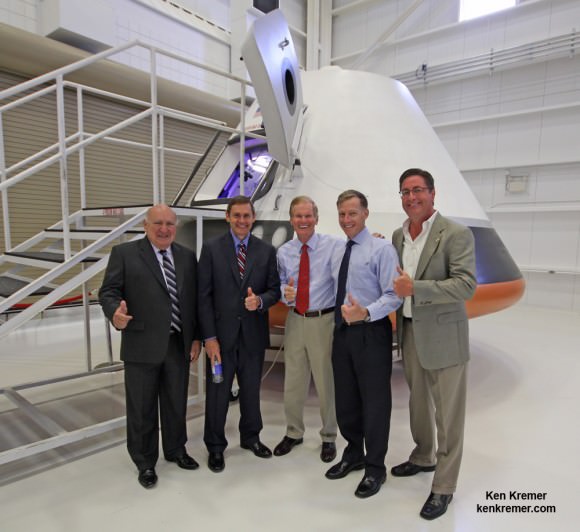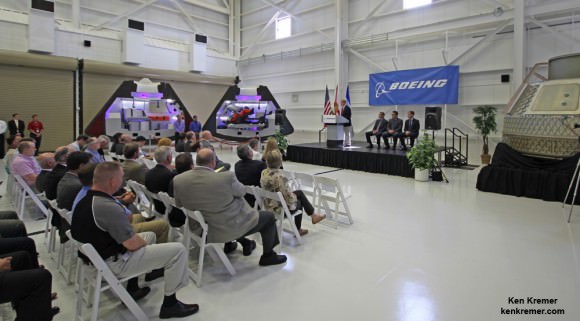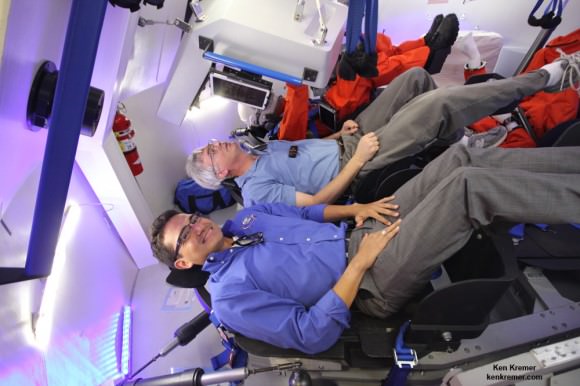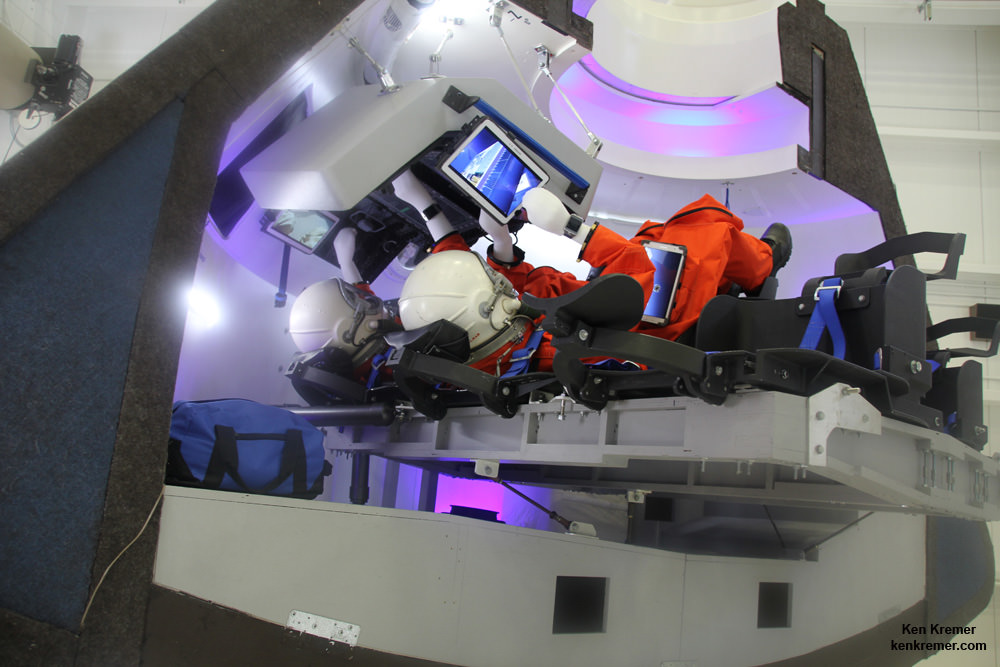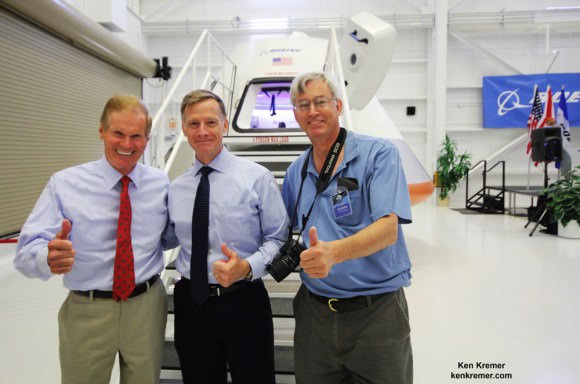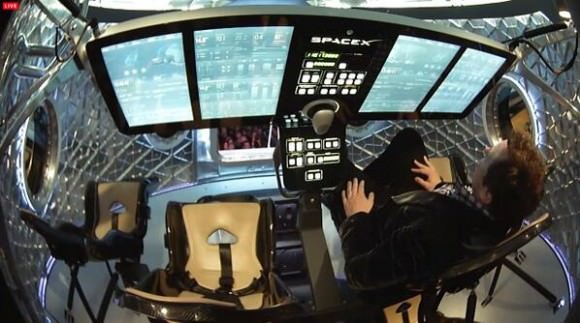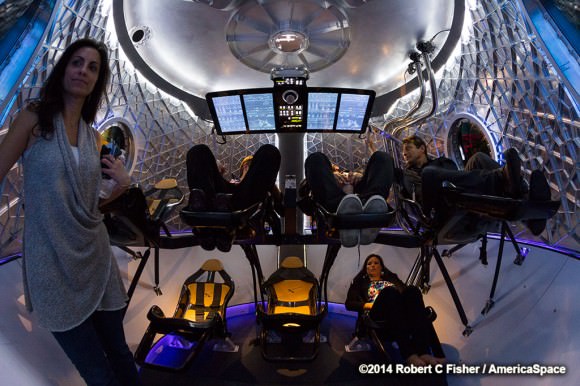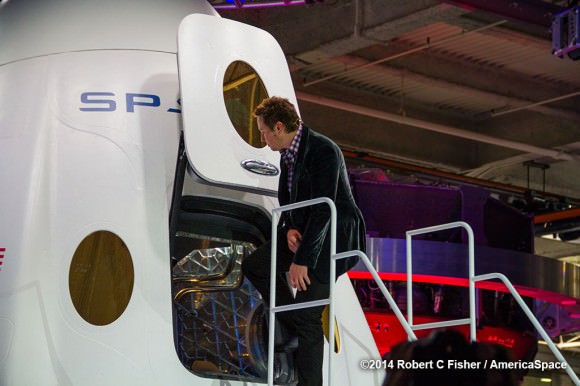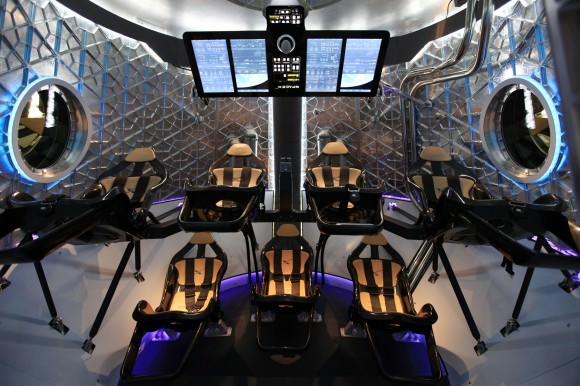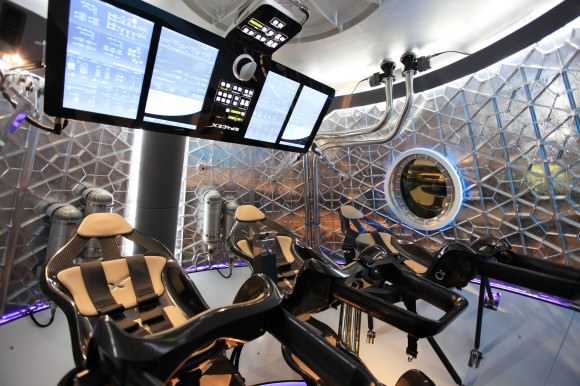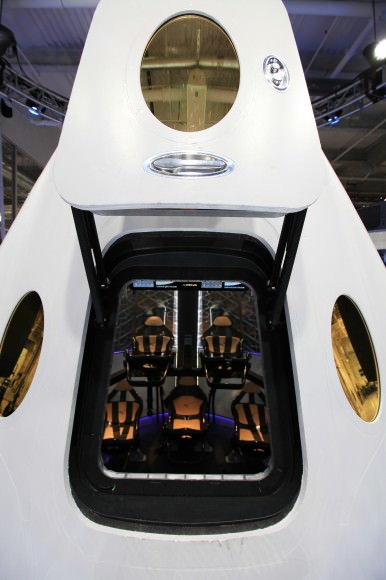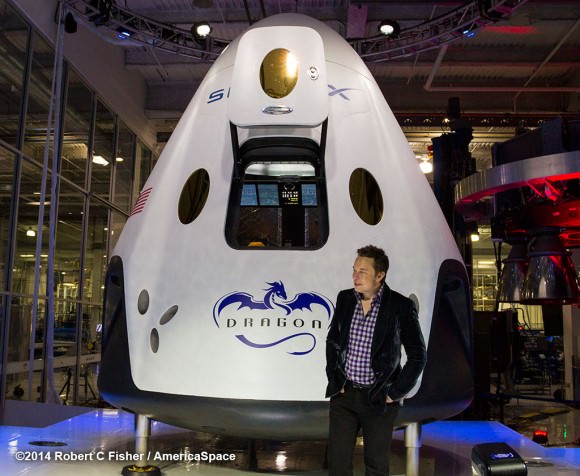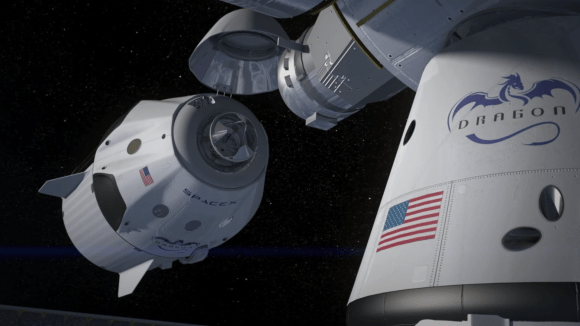Orbital 2 Launch from NASA Wallops Island, VA on July 12, 2014- Time of First Sighting Map
This map shows the rough time at which you can first expect to see Antares after it is launched on July 12, 2014. It represents the time at which the rocket will reach 5 degrees above the horizon and varies depending on your location . We have selected 5 degrees as it is unlikely that you’ll be able to view the rocket when it is below 5 degrees due to buildings, vegetation, and other terrain features. As an example, using this map when observing from Washington, DC shows that Antares will reach 5 degrees above the horizon more after than a minute. Credit: Orbital Sciences
See more trajectory viewing maps and NASA TV broadcast link below
Story updated[/caption]
NASA WALLOPS FLIGHT FACILITY, VA – Catching a break from nearly relentless and damaging thunderstorms along the US East coast, Orbital Sciences Corp. was finally able to roll their commercial Antares rocket out to its beachside launch pad at NASA Wallops Flight Facility, VA, early this morning, July 10, following a weather postponement that pushed the scheduled liftoff back by one day to Saturday, July 12 from Friday, July 11.
UPDATE: Orbital Sciences Corp. has postponed the launch of its Cygnus cargo spacecraft to the International Space Station until 12:52 p.m. EDT on Sunday, July 13, from the Mid-Atlantic Regional Spaceport’s Pad 0A at NASA’s Wallops Flight Facility in Virginia. Severe weather in the Wallops area has repeatedly interrupted Orbital’s operations schedule leading up to the launch.
The long delayed blastoff of the privately developed Antares rocket on a critical cargo mission bound for the International Space Station (ISS) and packed with science experiments is now slated for 1:14 p.m. on July 12 12:52 p.m. EDT on Sunday, July 13 from Launch Pad 0A at the Mid-Atlantic Regional Spaceport (MARS) at NASA Wallops Island on Virginia’s Eastern shore.
Antares is carrying the Orbital Sciences Cygnus cargo logistics spacecraft to orbit on the Orbital-2 (Orb-2) mission. It is the second of eight cargo resupply missions to the ISS under Orbital’s Commercial Resupply Services (CRS) contract with NASA.
Here’s our complete guide on “How to See the Antares/Cygnus July 12 Blastoff” – chock full of viewing maps and trajectory graphics (above and below) from a variety of prime viewing locations; including historic and notable landmarks in Philadelphia, Washington, DC., NYC, New Jersey, Virginia and more.
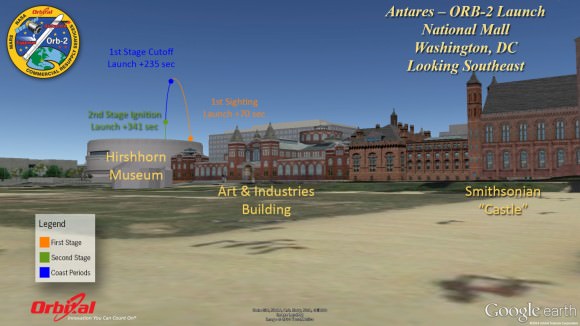
If you have never seen a rocket launch, this one could be for you especially since it’s now on the weekend and you don’t have to take the long trek to the Kennedy Space Center in Florida.
Depending on local weather conditions, portions of the daylight liftoff could be visible to millions of spectators along the US Eastern seaboard stretching from South Carolina to Massachusetts.
The launch window on Sunday, July 13 opens at 12:52 p.m. for a duration of 5 minutes.
NASA will broadcast the Antares launch live on NASA TV starting at 12 Noon – http://www.nasa.gov/nasatv
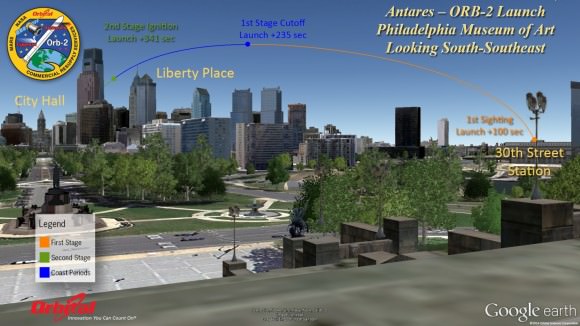
In the event of a delay for any reason the next available launch opportunity is Sunday, July 13 at 12:52 p.m.
The weather prognosis for both days this weekend is currently excellent.
The weather forecast shows a probability of acceptable weather at 80% GO on Saturday and improves to 90% GO on Sunday. Of course the weather can change on a dime.
Certainly the best viewing of all will be in the mid-Atlantic region closest to Wallops Island.
So if you have the opportunity to observe the launch locally, you’ll get a magnificent view and hear the rockets thunder at either the NASA Wallops Visitor Center or the Chincoteague National Wildlife Refuge/Assateague National Seashore.
For more information about the Wallops Visitors Center, including directions, see: http://www.nasa.gov/centers/wallops/visitorcenter
NASA will have special “countdown speakers” set up at the NASA Wallops Visitor Center, Chincoteague National Wildlife Refuge/Assateague National Seashore and Ocean City inlet.
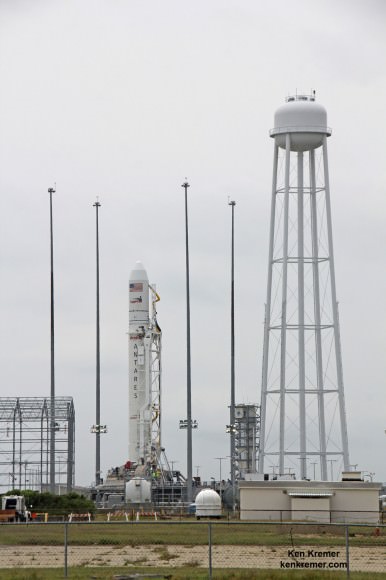
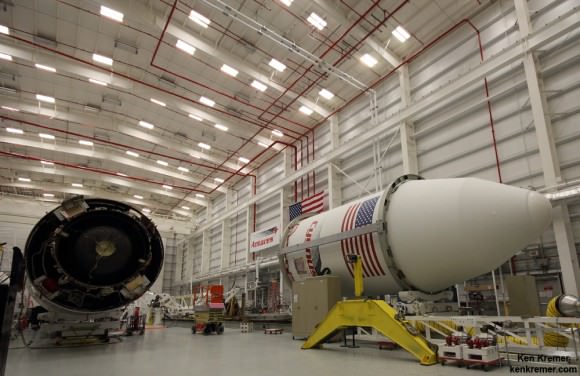
The Orb-2 launch was postponed about a month from June 10 to conduct a thorough re-inspection of the two Russian built and US modified Aerojet AJ26 engines that power the rocket’s first stage after a test failure of a different engine on May 22 at NASA’s Stennis Space Center in Mississippi resulted in extensive damage.
I was granted a visit to the Orbital Sciences Antares rocket integration facility at NASA Wallops recently as the engine re-inspection work by Aerojet engineers was winding down and ultimately resulted in approval to launch. See my Antares/Cygnus Orb-2 rocket photos herein.
The pressurized Cygnus cargo freighter will deliver 1,657 kg (3653 lbs) of cargo to the ISS including science experiments and instruments, crew supplies, food, water, computer equipment, spacewalk tools and student research experiments.
Cygnus will remain berthed at the station for 40 days.
For the destructive and fiery return to Earth, Cygnus will be loaded with approximately 1,346 kg (2967 lbs) of trash for disposal upon atmospheric reentry.
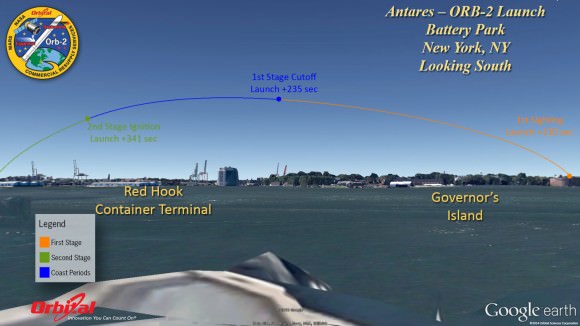
Despite the 1 day delay, an on time launch on Saturday will still result in Cygnus arrival at the ISS on July 15. The flight time to the ISS reduced from approximately 3 days to 2 days.
Station commander Steven Swanson of NASA and Flight Engineer Alexander Gerst of the European Space Agency (ESA) will grapple and berth Cygnus using the stations 57 foot-long robotic arm onto the Earth-facing port of the station’s Harmony module.
Orbital Sciences was awarded a $1.9 Billion supply contract by NASA to deliver 20,000 kilograms of research experiments, crew provisions, spare parts and hardware for 8 flight to the ISS through 2016 under the Commercial Resupply Services (CRS) initiative.
The July mission marks the second operational Antares/Cygnus flight.
The two stage Antares rocket stands 133 feet tall. It takes about 10 minutes from launch until separation of Cygnus from the Antares vehicle.
SpaceX has a similar resupply contract using their Falcon 9 rocket and Dragon cargo carrier and just completed their 3rd operational mission to the ISS in May.
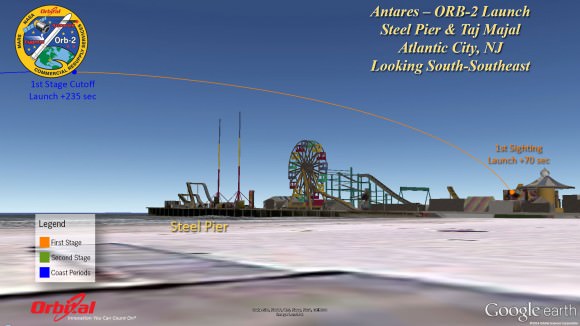
Watch for Ken’s onsite Antares Orb-2 mission reports from NASA Wallops, VA.
Stay tuned here for Ken’s continuing ISS, OCO-2, GPM, Curiosity, Opportunity, Orion, SpaceX, Boeing, Orbital Sciences, MAVEN, MOM, Mars and more Earth & Planetary science and human spaceflight news.
…………….
Learn more about NASA’s Mars missions and Orbital Sciences Antares ISS launch on July 12 from NASA Wallops, VA in July and more about SpaceX, Boeing and commercial space and more at Ken’s upcoming presentations.
July 11/12: “Antares/Cygnus ISS Launch from Virginia” & “Space mission updates”; Rodeway Inn, Chincoteague, VA, evening
